
Figurative Language Descriptive Sentence Writing Narrative ELA
FIGURATIVE LANGUAGE CHART The author uses many types of figurative language to describe different scenarios throughout the story. Find some of the figurative language, check the type and then describe how it relates to the story and what the author's intentions were for using them. NAME: BOOK TITLE: ©2022 Reading Is Fundamental
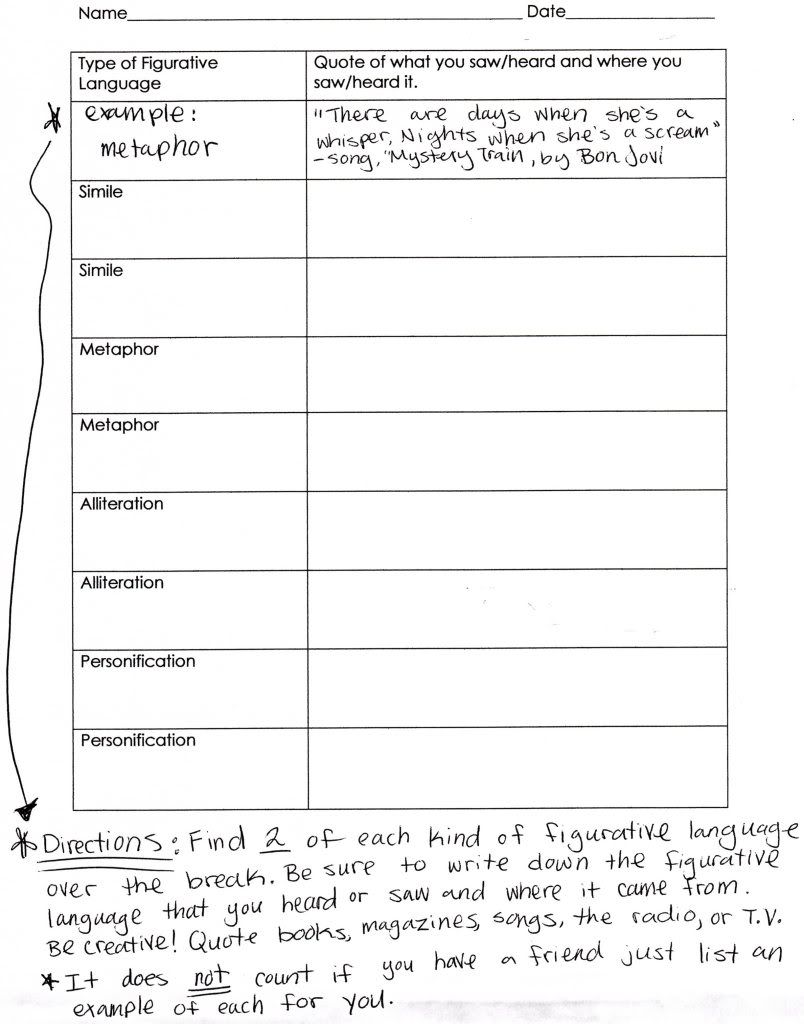
Figurative Language Chart Photo by rsnyder_rm51 Photobucket
The figurative language examples explored in this anchor chart set are: Similes: Uses the words "like" or "as" to compare one object or idea with another to suggest they are alike. Metaphors: A figure of speech comparing two unrelated things by saying one thing actually IS the other. Idioms: A commonly used expression whose meaning does.

Figurative Language Literature Quiz Quizizz
Figurative Language Definition. Figurative language uses figures of speech to be more effective, persuasive, and impactful. Figures of speech such as metaphors, similes, and allusions go beyond the literal meanings of the words to give readers new insights. On the other hand, alliterations, imageries, or onomatopoeias are figurative devices.
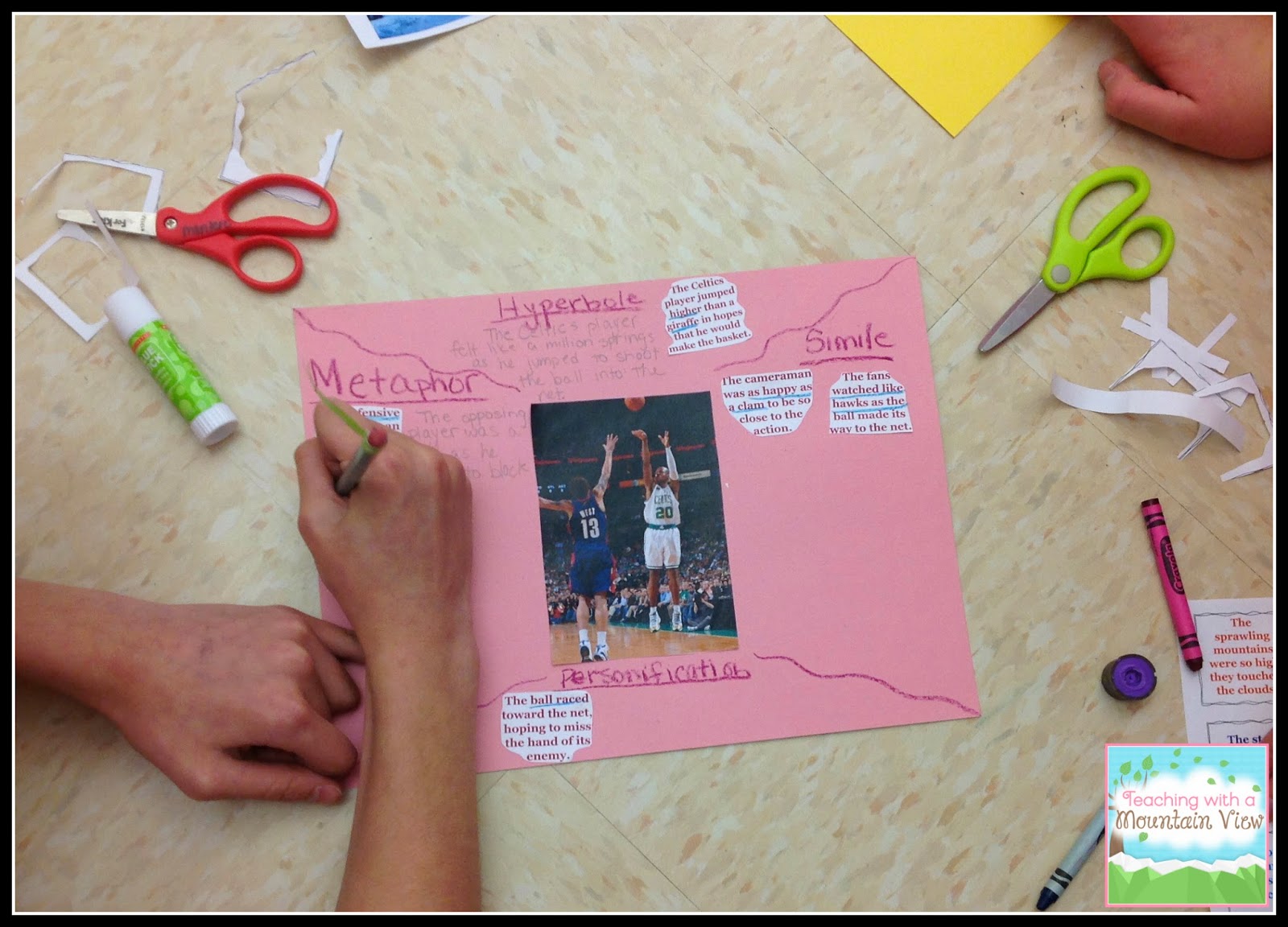
Teaching With a Mountain View Figurative Language Review
One great tool for teaching and learning figurative language is anchor charts. These visual aids provide students with a quick reference guide to different types of figurative language and can be a valuable resource in the classroom. Here are 16 figurative language anchor charts that you literally need right now: 1.

Figurative Language Anchor Chart School Pinterest Language
Basically, figurative language is anytime you stretch the actual meaning of words for effect, whether to sound artistic, make a joke, or communicate more clearly and engagingly. Figurative language is a common technique in narrative writing, where the author strives to make emotional connections with the reader.
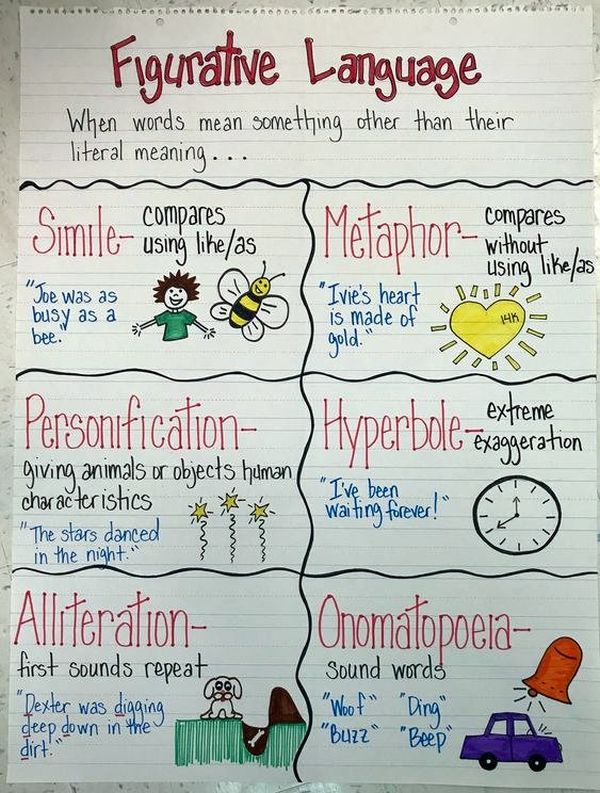
16 Fantastic Figurative Language Anchor Charts We Are Teachers
1. Figurative Language Basics This chart includes definitions and examples of some of the major types of figurative language. The pictures are terrific memory aids. Source: Angela A-W/Pinterest 2. Literal vs. Figurative Language Does it drive you nuts when kids use "literally" the wrong way? This chart might help!

Free Figurative Language Posters Figurative language posters
Here's a quick and simple definition: A metaphor is a figure of speech that compares two different things by saying that one thing is the other. The comparison in a metaphor can be stated explicitly, as in the sentence "Love is a battlefield." Other times, the writer may make this equation between two things implicitly, as in, "He was wounded.

Figurative Language Excelsior College OWL
Figurative Language Anchor Chart. Welcome to our figurative language anchor chart resources! Whether you're a learner or a teacher, the realm of figurative language brings a wonderful and challenging journey that enhances both reading comprehension and writing prowess. Figurative language adds depth and vividness to the texts we read and write.

Figurative Language Posters Figurative language, Similes and
5. While reading The Phantom Tollbooth, students complete the figurative language chart by finding the word or phrase from column 1, searching the Internet for the literal meaning (see WEB RESOURCES for appropriate websites), and using context clues from the story to determine the figurative meaning. Assign students one chapter of the novel to.

Figurative Language Definition, Examples and Different Types • 7ESL
This figurative language chart contains examples of metaphors, similes, personification, onomatopoeia, alliteration, idioms, and hyperboles. These are super helpful for kids when they come to include figurative language in their own writing. Use Twinkl Create to edit the examples for each type of figurative language to show KS2 children just.

Figurative Language 7Th Grade Mark Library
15. Metonymy: A chart demonstrating the use of a closely associated term to represent something else. 16. Synecdoche: A chart showcasing the use of a part of something to represent the whole. These anchor charts can serve as useful resources for teaching, learning, or reviewing figurative language.
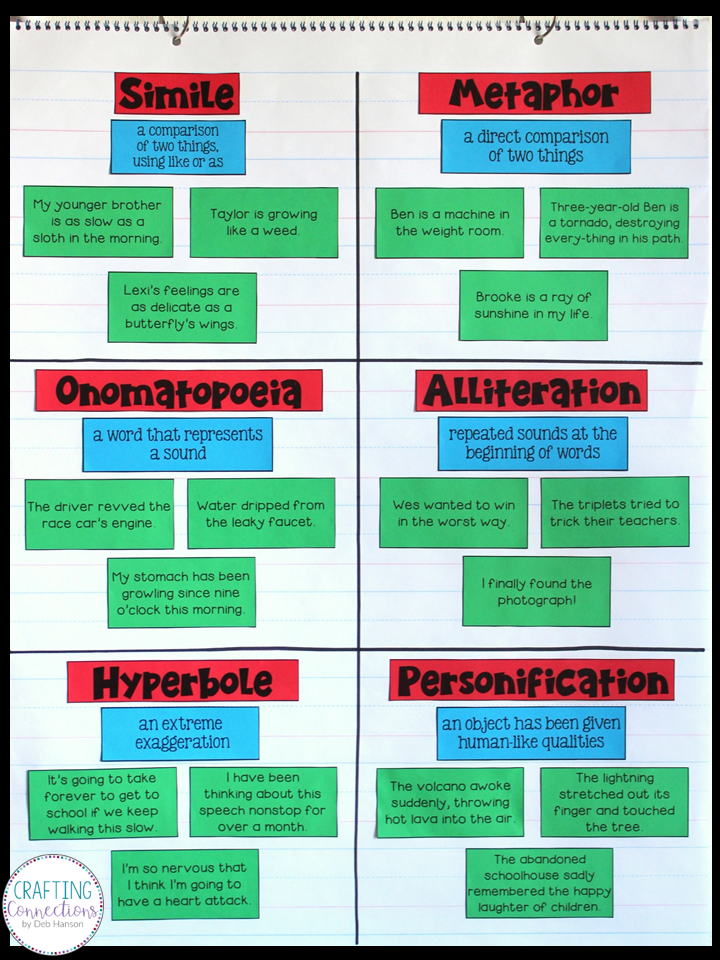
Printable Figurative Language Chart
Step 1: Identify and Define the Terms: Create Anchor Charts. Begin your lessons on metaphors and similes for kids and students of any age by defining figurative language, similes, and metaphors. Figurative language describes something in a creative way. Similes and metaphors are a type of figurative language.

Figurative Language Posters Figurative language, English writing
Figurative Language Chart Student Name: _____ WORD OR PHRASE PAGE IN BOOK LITERAL MEANING FIGURATIVE MEANING (Meaning in the story) Example: In the doldrums 22 An area near the equator where either strong winds or no winds come and go without warning. The place where you go to when you aren't thinking. You are not moving or doing anything.
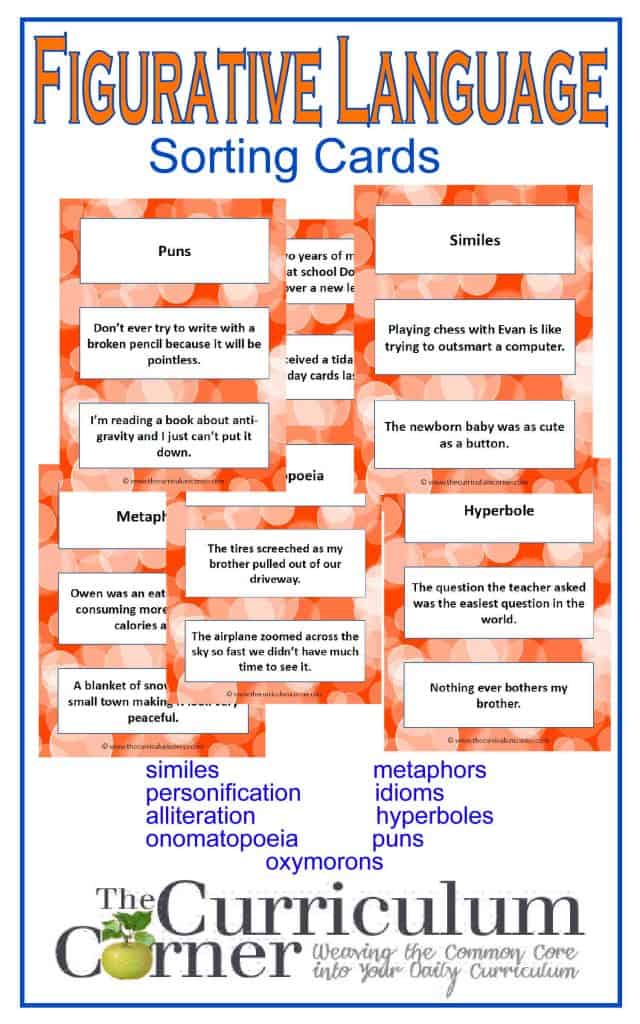
Figurative Language Cards The Curriculum Corner 456
What Is a Figurative Language Anchor Chart? Being introduced to figurative language is the first major step in reading comprehension. Sure, spotting story elements, character traits, metaphors, and themes develops comprehension, but figurative language is what makes literature different from any old scrabbling.

Figurative language anchor chart. Figurative language anchor chart
Figurative language refers to words or phrases that are meaningful, but not literally true. If you say "that news hit me like a ton of bricks," you are using figurative language; listeners understand the news you got was deeply moving, and also know that you were not actually hit by 2000 pounds of bricks (because if you had been you would be dead).

Printable Figurative Language Chart
Figurative language refers to words or expressions that have non-literal meanings: This definition associates figurative language only with the category of figures of speech called tropes (which are figures of speech that play with the literal meaning of words).